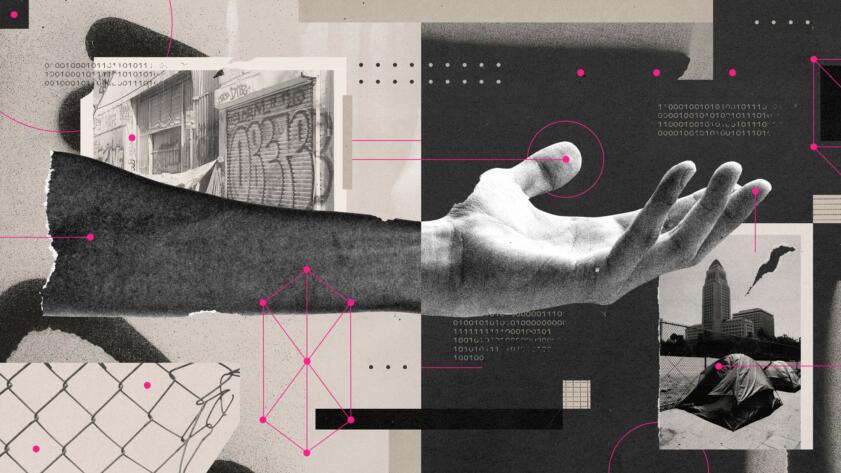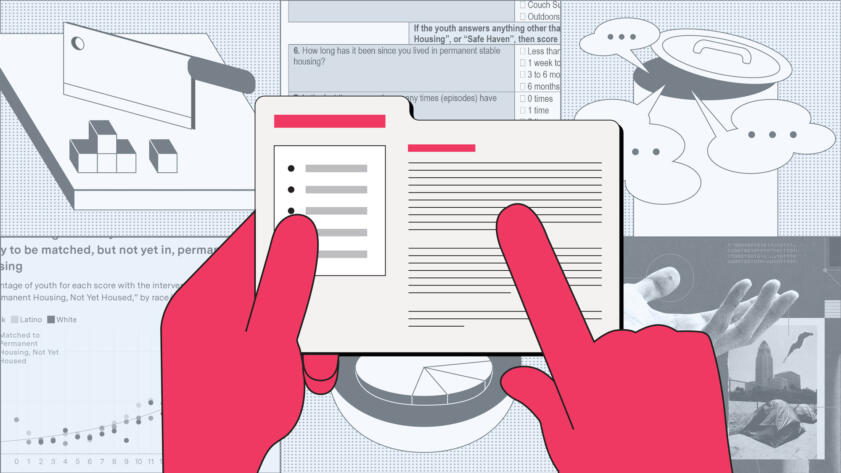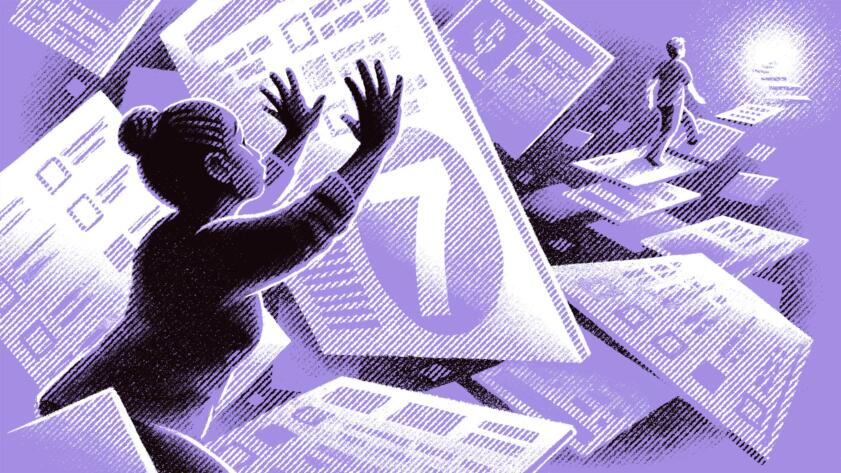Subscribe to Hello World
Hello World is a weekly newsletter—delivered every Saturday morning—that goes deep into our original reporting and the questions we put to big thinkers in the field. Browse the archive here.
Hi, everyone,
A few years ago, Markup reporter Colin Lecher was reading Automating Inequality by Virginia Eubanks and doing some digging on his own when he learned that:
- Los Angeles uses a scoring system to help decide who receives subsidized housing.
- Existing research on a few other cities using the same scoring system found racially biased results.
- Los Angeles had yet to release any scoring data.
So, no scoring data has been released? On a potentially racially biased system? Challenge accepted. Colin wanted that data.
In August 2021, he sent his first public records request to the Los Angeles Homeless Services Authority (LAHSA), asking about what scores people received, what kind of help they ultimately received (if any), and whether race played a factor in how people were scored and got help.
Over the next 18 months, Colin teamed up with Markup data reporter Maddy Varner, and the two of them followed up with LAHSA to ask for more records at least a half-dozen times. Their investigation, which we published last week, had a clear conclusion: As existing research said about other cities, L.A.’s scoring system—meant to help match subsidized housing with people who need it most—also had racially biased results.
Maddy and Colin found that in L.A., White people got the highest scores more often than Black people, and that gap persisted year over year. But the biggest disparities were among young adults under 25 years old. In 2021, 67 percent of White young adults got the highest scores, compared with 46 percent of Black young adults.

L.A.’s Scoring System for Subsidized Housing Gives Black and Latino People Experiencing Homelessness Lower Priority Scores
An investigation by The Markup found racial disparities in L.A.’s intake system for unhoused people
And how are these scores used? Experts and case workers told Colin and Maddy that all things being equal, the highest score is going to get the next offer for permanent housing.
The thing is, LAHSA knows.
In an email to Colin and Maddy, LAHSA spokesperson Christopher Yee said that the agency was aware of the “troubling racial disparities” in its assessment system and has limited the use of the survey for adults 25 and older, which, Yee wrote, was “now focused on permanent supportive housing placements.” In the email, Yee also noted that LAHSA has been working with researchers for years to develop a new assessment tool.
A further statement, from LAHSA spokesperson Ahmad Chapman, said the agency has continued to use its current system to match adults to permanent housing because the need is so great. The statement said LAHSA “has done a decent job of connecting various racial groups experiencing homelessness to permanent supportive housing” but recognizes “significant room for improvement” in reducing racial disparities.
A question you might be asking yourself is, Until this new, better system comes out, why would LAHSA still use the one it knows has “troubling racial disparities”?
While we don’t know the answer, we do have two pieces of the puzzle.
First, we know that LAHSA is required to use some kind of prioritization system to become eligible for certain federal housing funds under rules established by the U.S. Department of Housing and Urban Development.
Second, we know that there are more people experiencing homelessness in Los Angeles County than there is available permanent housing. LAHSA recently said that it needed a 250 percent increase in available permanent housing in order to quickly and efficiently move people off the streets and out of shelters.
University of Southern California professor Eric Rice, who is part of the team studying how to make LAHSA’s system more equitable, told Colin and Maddy, “I think that in some ways these vulnerability tools that I’m working on trying to improve are a function of a failed system where we don’t have enough resources dedicated to solving the problem.”
And this brings me to what I think is the most important point to understand about Colin and Maddy’s work: Because the lack of permanent housing resources is a national problem, what they found in L.A. is probably happening in many cities and counties across the United States.
Prior research has found racial inequities in the same scoring system used in other communities. We also know that, as of 2015, one of the surveys used by Los Angeles was also used in dozens of other cities and counties (scroll down to page 12) across the United States, according to its creators.

Story Recipes
Journalists: Investigate Homeless Vulnerability Scoring in Your City
The survey we investigated was also used in dozens of other cities and counties, according to its creators. Here are our tips for looking into it
As Maddy shared with me, “If you’re not sure if it’s happening in your city, it probably is.”
There are more cities and scoring systems out there than we, as one small newsroom, can investigate, so we did the next best thing. Maddy and Colin wrote a story recipe filled with our best tips on how to get the data in any city or county (getting all the data we wanted took months in L.A.) and investigate further. I know they’re eager for you to use it. If you’re interested in looking into homeless vulnerability scoring in a city, or know someone who might be—as a journalist, researcher, or a community member—please share our story recipe and our investigation with them. You can also share exactly how we did our investigation in L.A.
Colin and Maddy would also love to help any fellow journalists do their own investigations. If you start looking into it and have questions, email them at hello@themarkup.org (I promise your email will get to them).
At The Markup, we’ve covered Big Tech from the beginning, and continuing to cover the tech giants like Amazon, Google, and Facebook is critical.
What’s just as essential is our coverage of the bigger, more ubiquitous use of tech by institutions to make critical decisions about people’s lives. This story is such a great example of that. The scoring system we investigated in L.A., which is likely used in dozens of other places, was practically mandated by the federal government, purchased by local government, and the tech behind it wasn’t created by the well-known tech giants.
We’ll keep bringing you stories like these, because we know how important it is that they be told.
Thank you for reading.
Sincerely,
Sisi Wei
Editor-in-Chief
The Markup




